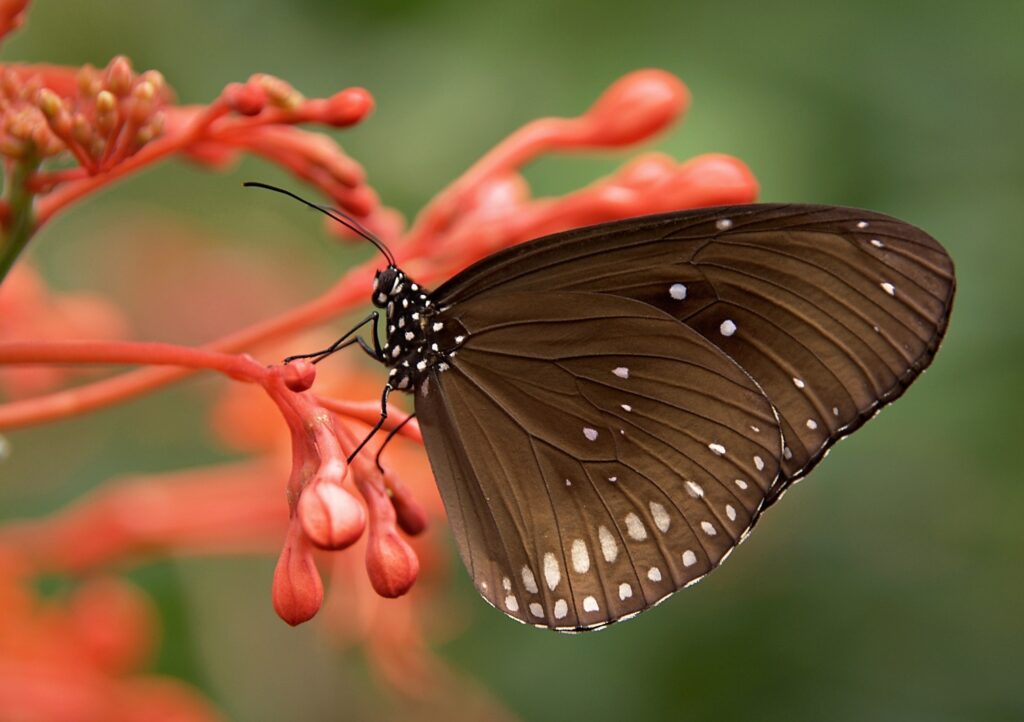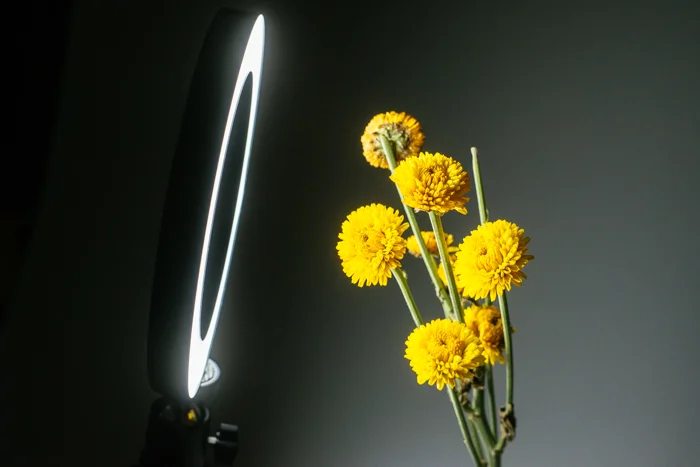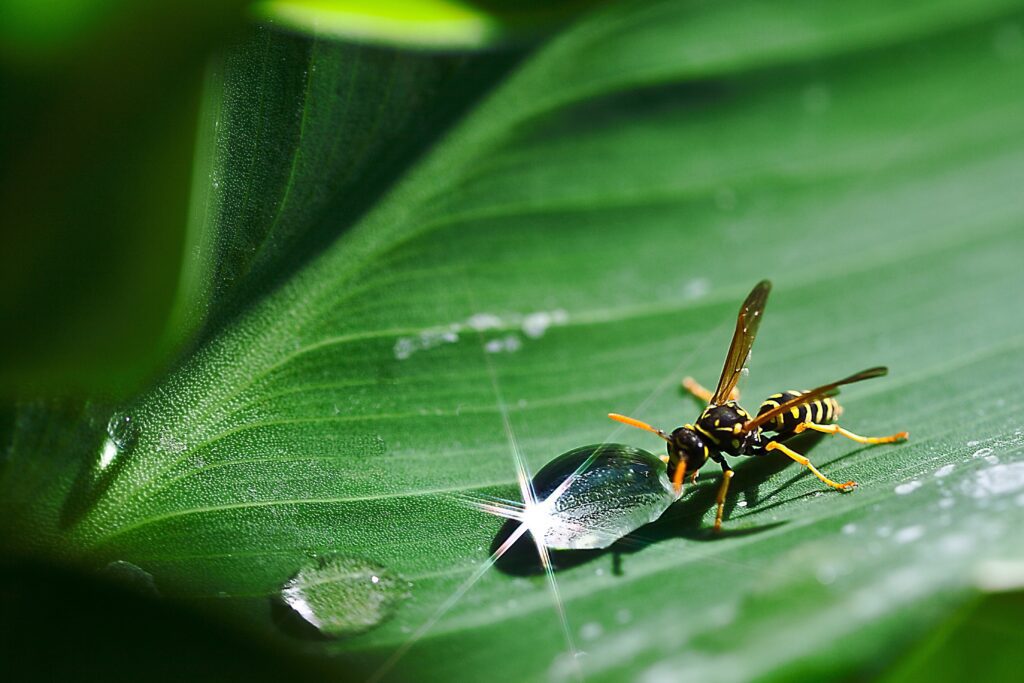Macro photography is an enchanting kind of photography that explores the world of tiny subjects and shows their intricate details up close. It involves capturing images at a 1:1 or higher magnification ratio, showcasing the hidden beauty of objects like insects, flowers, textures, and small everyday items. The goal of macro photography is to portray these subjects in a way that highlights their often unnoticed features. It requires specialized equipment, careful composition, and a keen eye for detail, offering photographers a unique and rewarding way to explore the beauty of the miniature world.
Exploring essential equipment and tools needed to capture stunning macro shots


Image source: photographylife
Excited for macro photography? Get essential equipment and tools to bring your tiny subjects to life and capture stunning shots!
Macro Lens Magic: Get a good macro lens with 1:1 magnification or more for stunning details.
Steady as You Go: Keep those shots blur-free with a sturdy tripod, ensuring stability in your close-up compositions.
Remote Shutter Release: Say goodbye to camera shakes! Use a remote shutter release for precise, shake-free captures.
Magnify with Extension Tubes: If you’re on a budget, extension tubes can turn any lens into a makeshift macro marvel.
Ring Light Brilliance: Illuminate your subjects with a ring light, perfect for even lighting in your macro shots.
Reflectors & Diffusers: Tame harsh light and soften shadows with these nifty tools for dreamy macro effects.
Focus Stacking Software: Get amazing focus in your photos by using focus stacking software to combine multiple shots.
Learning the art of focusing, composition, and lighting for captivating macro images.
Focusing in macro photography refers to the process of achieving sharp and precise focus on the tiny and intricate details of close-up subjects. So, achieving accurate focus in macro photography can be challenging due to the shallow depth of field at close distances. In macro photography, the depth of field can be very narrow, making it essential to carefully control where the focus falls. Photographers often use techniques like manual focusing, focus stacking, and using a small aperture (higher f-number) to increase the depth of field and ensure that the important details of the subject are sharp and well-defined.


Composition in macro photography refers to the arrangement and placement of elements within the frame when capturing close-up shots of small subjects. Some common composition techniques in macro photography include:
- Rule of Thirds: Dividing the frame into nine equal parts and placing the subject along these imaginary lines or at their intersections for a visually pleasing composition.
Learn more about the Rule of Thirds - Leading Lines: Using natural or man-made lines to guide the viewer’s eyes toward the main subject, adding depth and direction to the image.
- Framing: Using elements in the foreground or background to frame the subject, drawing attention to the center of the image.
- Negative Space: Leaving empty space around the subject to create a sense of simplicity and draw focus to the main subject.
- Background Selection: Paying attention to the background and ensuring it complements and enhances the subject without distracting from it.
- Visual Balance: Creating equilibrium between different elements within the frame to avoid a cluttered or unbalanced appearance.
Lighting can make or break your macro images. Enjoy the soft and warm tones of natural light during golden hours. When shooting indoors, diffuse the light to create a gentle and dreamy feeling. To add a touch of drama and experiment with side lighting or backlighting to create captivating shadows and highlights. So don’t be afraid to try unconventional lighting sources like LED panels or even a flashlight for artistic effects.
Tips for manipulating natural and artificial light to enhance macro images


Image source: Expert photography
Let’s look at how manipulating both natural and artificial light can do wonders for enhancing your macro images. First up, embrace the golden hours – those moments just after sunrise and before sunset. The soft, warm light adds a touch of enchantment to your macro shots.
When natural light isn’t on your side, don’t fret! Because you can turn to artificial lighting like a ring light or an external flash with a diffuser. They’ll illuminate your subjects beautifully, adding that extra pop to your shots. Sometimes, less is more. So don’t overpower your subjects with harsh light. Instead, let the soft glow accentuate their delicate details. Lastly, be patient and wait for the perfect light conditions. Because great lighting is one of the main keys to stunning macro images.
Enhancing your macro images using simple editing techniques.
- First, start with basic adjustments. Fine-tune exposure, contrast, and white balance to bring out the best in your macro subjects.
- Next, sharpen those intricate details. Apply selective sharpening to emphasize the tiny textures and patterns in your images.
- Unleash your creativity with color adjustments. Enhance the vibrancy of flowers or create moody atmospheres for artistic flair.
- Consider cropping for better composition. Focus on the essence of your subject and remove distractions for a powerful impact.
- And don’t forget to try black and white conversions for a timeless, artistic touch that accentuates the form and texture.
- Important: Remember to keep it natural and don’t overedit your macro clicks.
Tips for capturing captivating macro shots in various weather conditions
Let’s explore some handy tips for capturing macro shots in various weather conditions.
Rainy Days: Don’t let rain ruin your mood! Raindrops on flowers and insects can add magic to your macro shots. Cover your camera with a waterproof case and get ready to capture nature’s beauty.
Sunny Days: Embrace the sunshine and make the most of natural light. Use a diffuser or reflector to soften shadows and add a soft glow to your subjects.
Windy Days: Wind can be a challenge, but it can also add a dynamic element to your shots. Be patient and wait for brief moments of stillness or use a higher shutter speed to freeze motion.
Overcast Days: Cloudy skies create soft, even lighting, perfect for capturing fine details without harsh shadows. So this weather is ideal for exploring textures and intricate patterns.
Frosty Mornings: Cold mornings bring unique opportunities for frosty close-ups. Get up early and capture nature’s delicate ice crystals in all their glory.
Snowy Scenes: Don’t miss the chance to photograph winter wonderlands. Use a lens hood to protect your gear and play with white balance to avoid overexposure.
Foggy Atmospheres: Fog gives a dreamy feel to your macro shots. Try different compositions and capture subjects appearing from the mist.
No matter the weather, but be prepared with appropriate gear and patience. Mother Nature offers endless opportunities for stunning macro shots. So, embrace the elements and get creative with your photography.


Addressing common hurdles and how to overcome them for better results
When you experience macro photography, you might encounter some common hurdles along the way. So let’s address these challenges and learn how to overcome them for better results.
- Focus Woes: Achieving sharp focus in macro shots can be tricky and try using manual focus or focus stacking to capture more depth.
- Camera Shake: At close distances, even the tiniest movement can blur your shots. So, use a tripod and remote shutter release for steady results.
- Depth of Field: Macro photography has a narrow focus, making it challenging to keep everything sharp. However, you can try different settings to have more control.
- Unwanted Shadows: Light and shadows play a big role in macro shots and use diffusers or reflectors to soften harsh shadows and add a touch of magic.
- Windy Weather: Nature can be unpredictable, but you can still capture great shots. Be patient and use higher shutter speeds to freeze motion.
- Moving Subjects: Insects and flowers don’t always sit still. Anticipate their movements and use burst mode for more chances to capture the perfect shot.
- Background Distractions: A cluttered background can distract from your subject. So, adjust your angle or use a wide aperture to blur the background.
Remember, practice makes perfect in macro photography! Embrace these challenges and, learn from them. Let your creativity shine!
If you have any inquiries, please put them in the comments section below. I’ll answer them in our upcoming blog post!
Happy photography!






